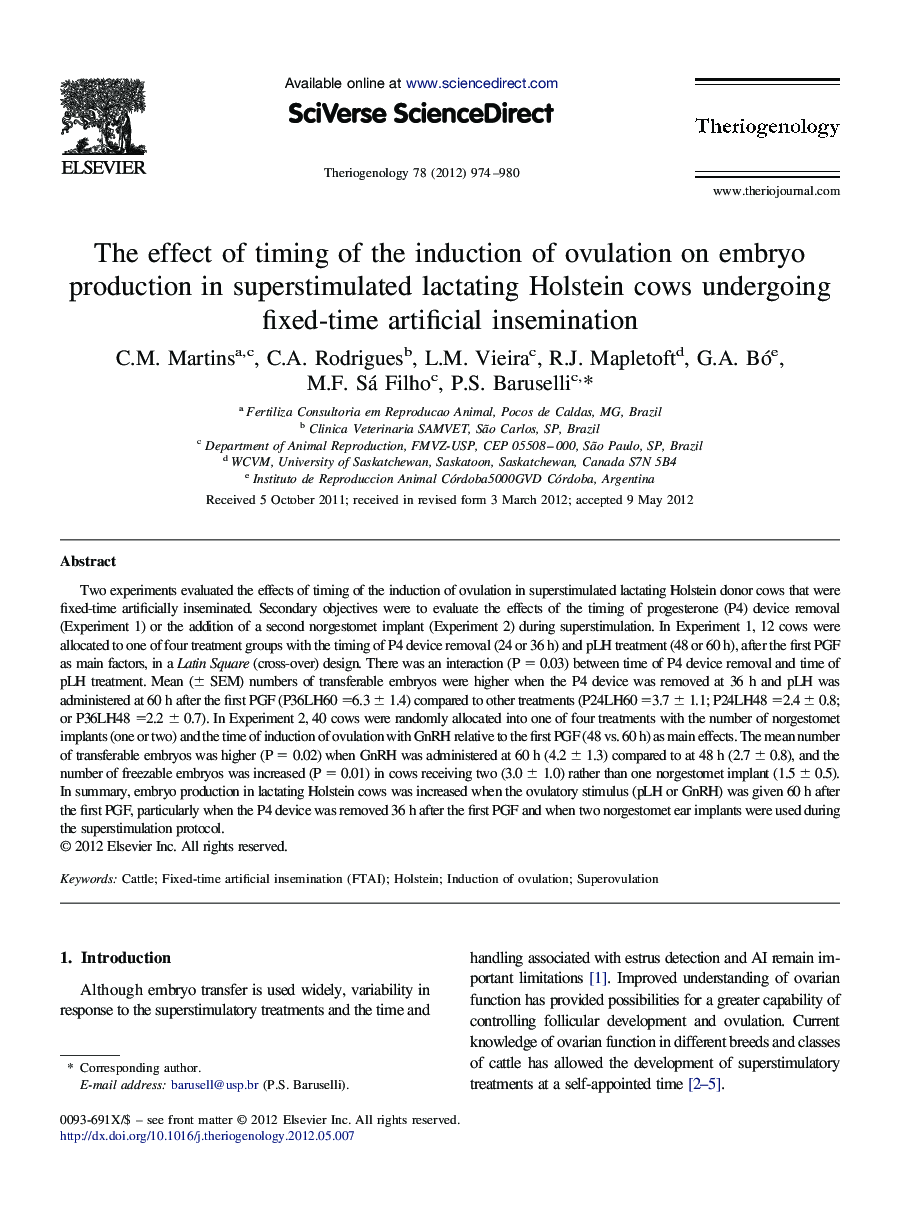| Article ID | Journal | Published Year | Pages | File Type |
|---|---|---|---|---|
| 10894491 | Theriogenology | 2012 | 7 Pages |
Abstract
Two experiments evaluated the effects of timing of the induction of ovulation in superstimulated lactating Holstein donor cows that were fixed-time artificially inseminated. Secondary objectives were to evaluate the effects of the timing of progesterone (P4) device removal (Experiment 1) or the addition of a second norgestomet implant (Experiment 2) during superstimulation. In Experiment 1, 12 cows were allocated to one of four treatment groups with the timing of P4 device removal (24 or 36 h) and pLH treatment (48 or 60 h), after the first PGF as main factors, in a Latin Square (cross-over) design. There was an interaction (P = 0.03) between time of P4 device removal and time of pLH treatment. Mean (± SEM) numbers of transferable embryos were higher when the P4 device was removed at 36 h and pLH was administered at 60 h after the first PGF (P36LH60 =6.3 ± 1.4) compared to other treatments (P24LH60 =3.7 ± 1.1; P24LH48 =2.4 ± 0.8; or P36LH48 =2.2 ± 0.7). In Experiment 2, 40 cows were randomly allocated into one of four treatments with the number of norgestomet implants (one or two) and the time of induction of ovulation with GnRH relative to the first PGF (48 vs. 60 h) as main effects. The mean number of transferable embryos was higher (P = 0.02) when GnRH was administered at 60 h (4.2 ± 1.3) compared to at 48 h (2.7 ± 0.8), and the number of freezable embryos was increased (P = 0.01) in cows receiving two (3.0 ± 1.0) rather than one norgestomet implant (1.5 ± 0.5). In summary, embryo production in lactating Holstein cows was increased when the ovulatory stimulus (pLH or GnRH) was given 60 h after the first PGF, particularly when the P4 device was removed 36 h after the first PGF and when two norgestomet ear implants were used during the superstimulation protocol.
Related Topics
Life Sciences
Agricultural and Biological Sciences
Animal Science and Zoology
Authors
C.M. Martins, C.A. Rodrigues, L.M. Vieira, R.J. Mapletoft, G.A. Bó, M.F. Sá Filho, P.S. Baruselli,
